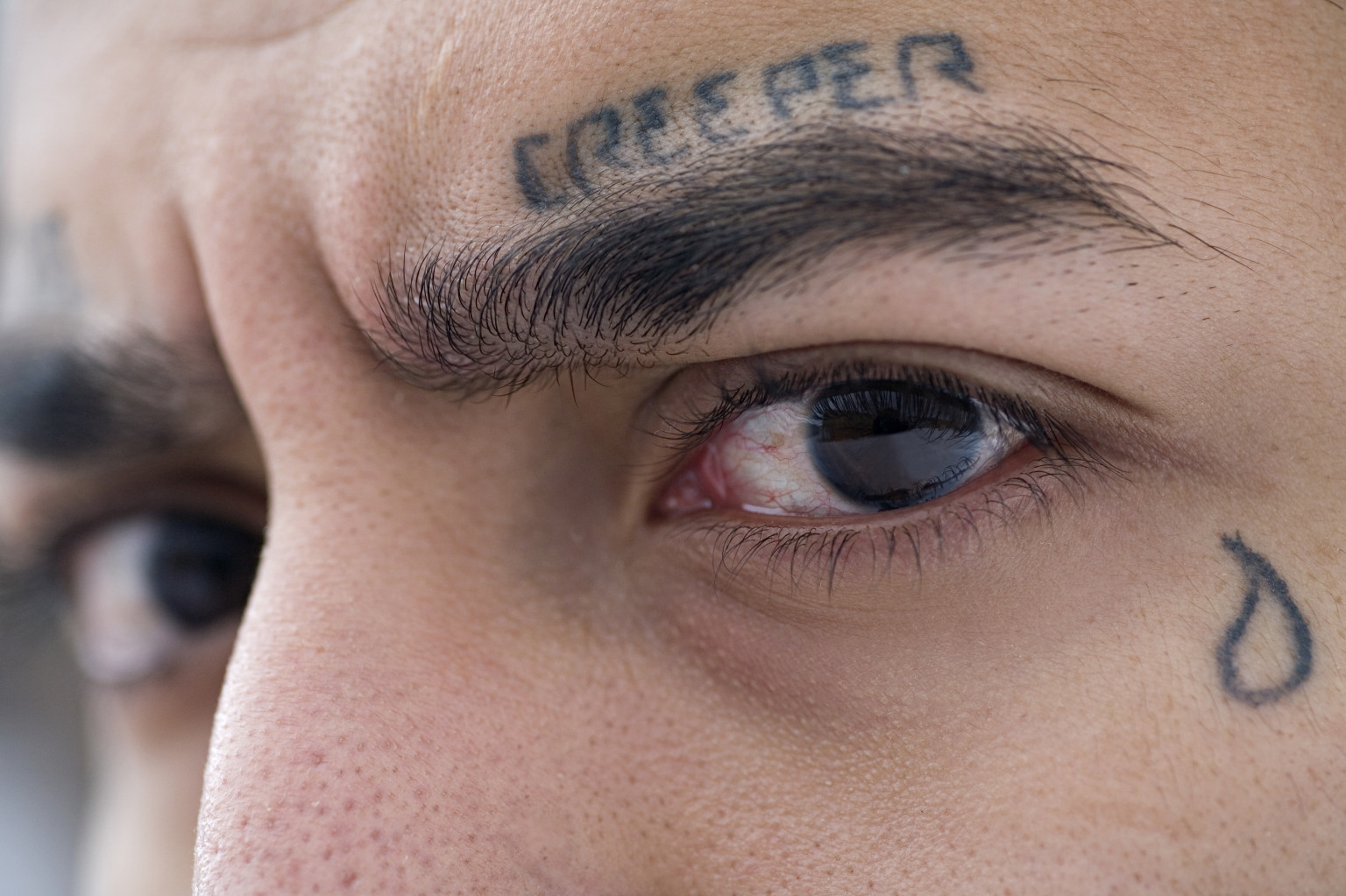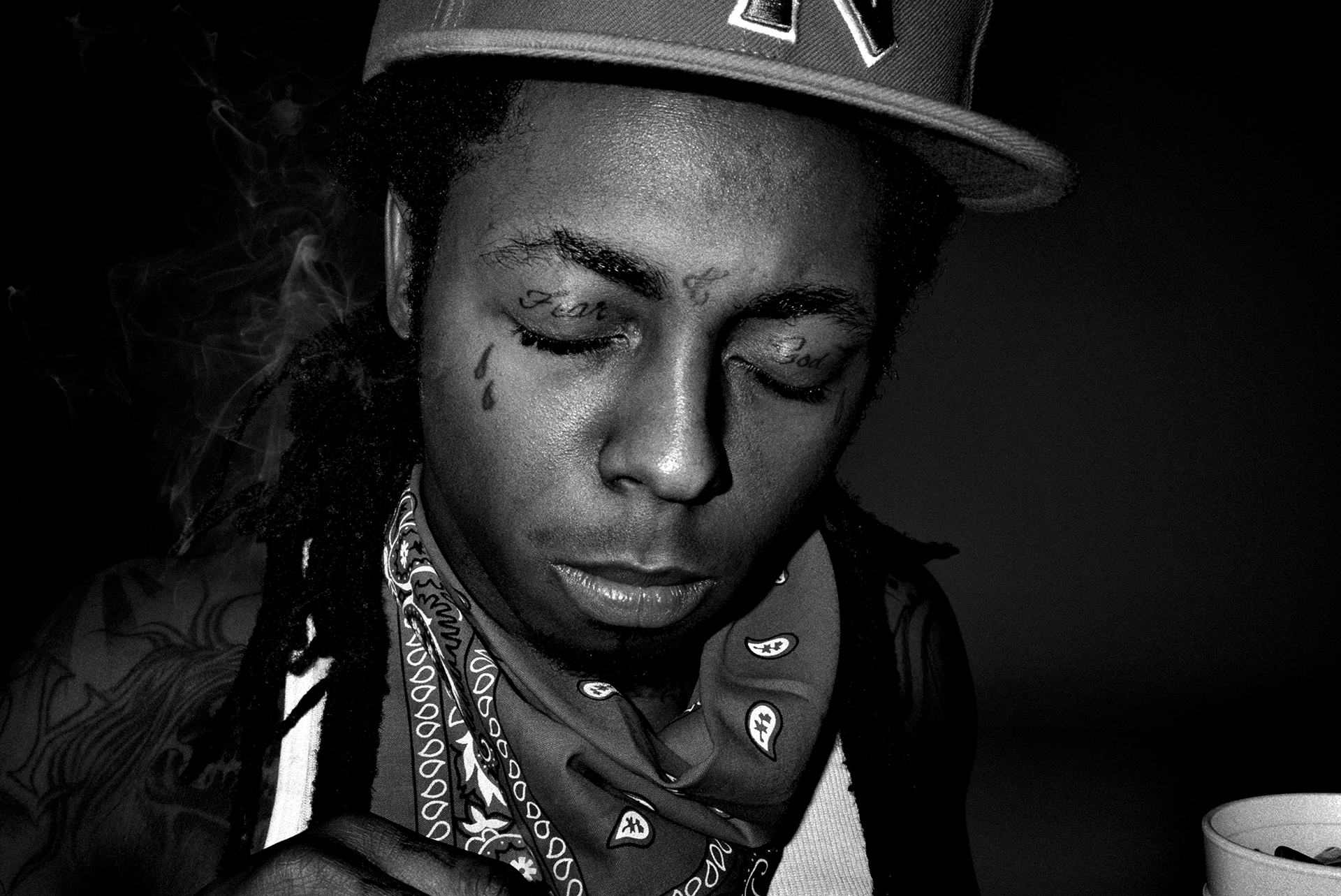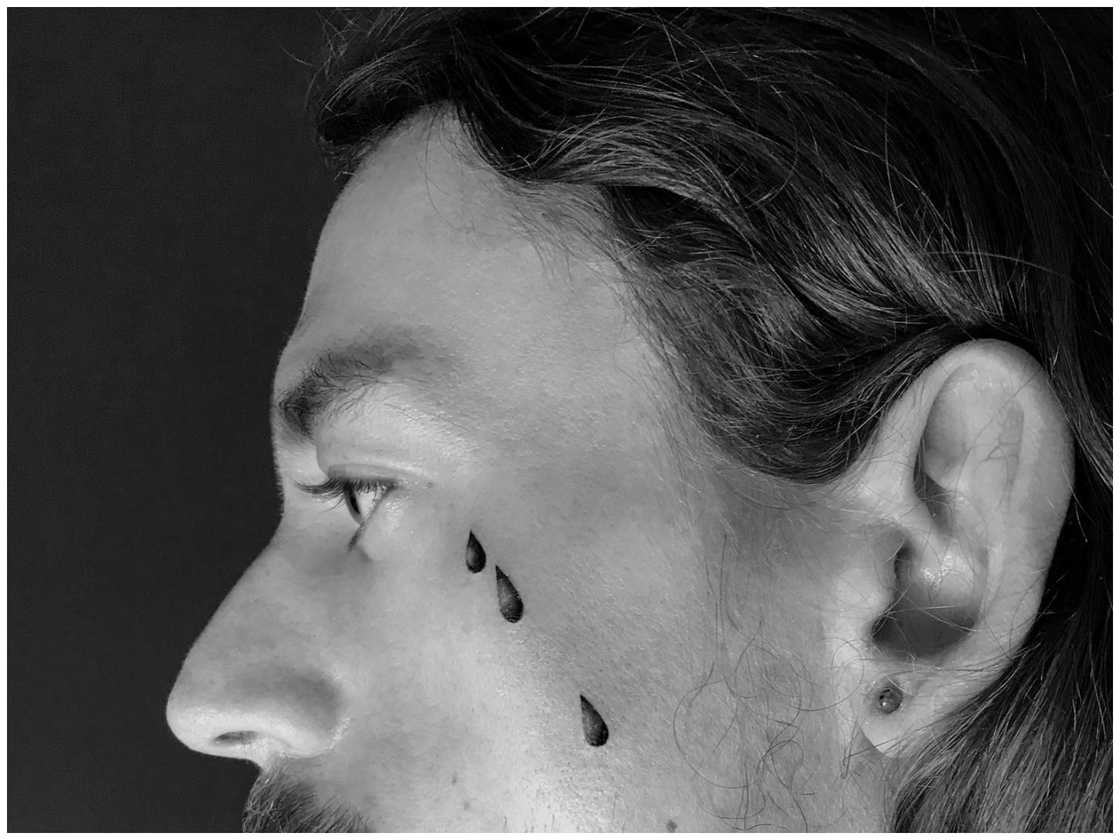“There is almost no way to conceal a design inked near the eye, highlighting the deliberately public declaration a teardrop tattoo constitutes.” — MoMA – Design and Violence Exhibition (link)
Few tattoo symbols stir as much curiosity or misunderstanding as the teardrop. Small and placed under the eye, it’s more than just decoration—it often signals a deep personal history. While commonly associated with prison life and gang culture, its meaning isn’t fixed. For some, it represents loss or mourning; for others, acts of violence or survival. As the symbol has spread beyond its original context, it’s taken on new layers of meaning, shaped by culture, experience, and intent. This article explores the complex past and present of the teardrop tattoo, and what it really says about the person wearing it.

The origins of the teardrop tattoo
The teardrop tattoo is one of the most recognisable and misunderstood symbols in the world of body art. Its roots lie mainly within prison culture, particularly in the United States, but there are earlier hints of similar markings in older civilisations. The exact origin is difficult to pin down, yet most researchers trace the popularisation of the teardrop tattoo to American prison systems from the 1960s onwards. In those settings, tattoos often served as non-verbal communication—marking allegiance, personal history, or criminal accomplishments. The teardrop became particularly associated with violence and mourning. Some say it originally marked the death of a fellow gang member or close friend, a sign of grief worn under the eye as a permanent memory. Others point out it could signal that the wearer had killed someone—either inside prison or outside of it. In this context, each drop could mark a murder committed, or intended revenge. It was a warning to others and a badge within certain hierarchies.
However, it’s worth noting that the symbol wasn’t always worn voluntarily. There are accounts from former inmates and criminologists stating that some were forcibly tattooed with the teardrop by other prisoners, particularly in cases of sexual assault or power struggles. In such instances, the symbol was meant to shame rather than glorify. This complexity makes the teardrop tattoo difficult to interpret without context. It wasn’t simply a mark of toughness—it could just as easily represent trauma or coercion.
Over time, the association with criminal acts became dominant in the public eye, especially as media began to report on celebrities and notorious figures wearing similar ink. Still, understanding its origin requires acknowledging the hidden layers behind what looks like a simple drop of ink beneath the eye.
“In some circles, the outline of a teardrop (i.e., one that is not fully shaded) is used to show that someone close to the wearer has been unjustly killed and that they are seeking revenge. Once the revenge has been carried out, the teardrop is completed by being filled in.” — Trent Aitken-Smith – The Tattoo Dictionary
Symbolism across cultures and subcultures
While the teardrop tattoo gained notoriety in American prison culture, the motif of a teardrop has existed in various forms across human history. In many cultures, the tear has symbolised grief, sorrow, or profound emotional loss. For example, in Mexican and Chicano subcultures—especially those tied to the Pachuco and later the Cholo movements—tattoos became an important form of self-expression and resistance. Within these groups, the teardrop was occasionally used to mark mourning or remembrance, particularly of friends killed in gang violence. It wasn’t necessarily an admission of guilt, but rather a tribute to lost comrades.
In Russia, prison tattoos have long had structured meanings, often deeply coded. While the teardrop doesn’t feature heavily in Russian criminal iconography, the broader use of facial tattoos carries weight. Tattoos in that system could indicate criminal rank, political defiance, or religious symbolism. A small dot or mark near the eye, for instance, might be interpreted in various ways depending on placement and surrounding imagery. In this context, the Western teardrop might be misread—or even ignored entirely.
In Maori and Polynesian traditions, facial tattoos (moko) are highly significant but unrelated to the modern teardrop. There, ink on the face symbolises identity, ancestry, and status. However, the presence of facial tattoos in these cultures shows how facial markings have long been used to carry meaning far beyond decoration.
Amongst modern street gangs outside the US—in places like Brazil, South Africa, and the Philippines—the teardrop tattoo has also made appearances. Often, these meanings mimic American interpretations, especially as American prison culture has been exported globally through films, TV, and music. In some places, a teardrop still means a murder committed. In others, it means a sentence served or a loss endured. So, while the symbol appears small, its meanings range widely depending on geography, community, and the bearer’s own story.

Photo: Rapper Lil Wayne with teardrop tattoos under his eyes, via Wikipedia
Teardrop tattoo in popular media and misinterpretation
The spread of the teardrop tattoo into public consciousness owes a lot to film, music, and celebrity culture. Hollywood, in particular, has played a major role in framing the teardrop as a symbol of danger, often reinforcing stereotypes. In crime dramas or prison films, a character with a teardrop tattoo is often portrayed as a killer or hardened criminal. This consistent portrayal over decades has shaped public assumptions. The problem is, these portrayals are often simplified for drama and don’t reflect the real-life diversity of meanings. The tattoo has become a prop more than a signal of lived experience.
In rap and hip-hop culture, teardrop tattoos have also become prominent. Artists like Lil Wayne and The Game have worn them, leading to public speculation about what they mean. Sometimes, the tattoos are symbolic, representing loss or time served in prison. In other cases, they are part of the artist’s stage persona, not necessarily tied to a criminal past. This makes interpretation even more complex. When public figures wear the symbol, it can lose its original context. Fans might get similar tattoos without fully understanding their meaning, contributing to the misinterpretation.
There are also cases where the teardrop is used purely for aesthetic reasons. Some people are drawn to its visual impact or the mystique around it. However, this can cause tension. In certain neighbourhoods or prison systems, wearing a teardrop tattoo without having earned it—or without understanding its implications—can be seen as deeply disrespectful or even dangerous.
This raises ethical questions about cultural borrowing and identity. When symbols like the teardrop are taken from marginalised or violent environments and turned into fashion, it can trivialise the realities they came from. It also makes the job of police, social workers, and even tattoo artists more difficult, as meaning becomes harder to pin down. The teardrop has moved beyond its origins, but not without consequence.
Modern use and overall understanding today
Today, the teardrop tattoo exists in a complicated space. It no longer belongs solely to one group or meaning. While it still carries connotations of crime, violence, or grief, it has also entered broader use. Some people wear the teardrop to mark personal trauma—such as the death of a child, a suicide in the family, or a difficult past. For others, it represents a major life event or transformation, not necessarily connected to prison or crime. In some recovery communities, for instance, it may symbolise survival or emotional rebirth.
Tattoo culture has changed dramatically in the last two decades. With the rise of social media and mainstream acceptance, facial tattoos are more visible than ever. Younger generations, in particular, are more likely to view tattoos as personal storytelling rather than social signals. The teardrop is now sometimes reclaimed as a symbol of mourning, mental health struggle, or emotional honesty.
Still, it would be naïve to ignore the risks. In many parts of the world, especially where gang culture is active, the teardrop still carries a heavy message. Getting such a tattoo can attract unwanted attention—from police, rival gangs, or even members of one’s own community. For tattoo artists, it’s important to inform clients of this context. Some will even refuse to ink a teardrop unless they know the story behind the request.
In short, the teardrop tattoo is no longer a single story. It’s a symbol shaped by context, history, and culture. Once exclusive to prisons and gangs, it now walks the line between fashion, memorial, and social signal. Understanding it requires more than a glance. Today, more than ever, it asks the same question of both wearer and observer: What does it mean to you?
Sources and further reading
- DeMello, Margo. Inked: Tattoos and Body Art Around the World. ABC-CLIO, 2014.
- Vail, D. Angus. “Tattoos Are Like Potato Chips… You Can’t Have Just One: The Role of the Tattoo in Identity Formation.” Deviant Behavior, vol. 20, no. 3, 1999, pp. 253–273.
- Caplan, Jane. Written on the Body: The Tattoo in European and American History. Princeton University Press, 2000.
- Skarbek, David. The Social Order of the Underworld: How Prison Gangs Govern the American Penal System. Oxford University Press, 2014.
- Tattoo Archive. “Teardrop Tattoo.” tattooarchive.com
- BBC News. “What Does a Teardrop Tattoo Mean?” bbc.com/news/magazine-12740643
- Heller, Steven. Design Literacy: Understanding Graphic Design. Skyhorse Publishing, 2014. Russian Criminal Tattoo Encyclopaedia. Vol. I–III. FUEL Publishing.

